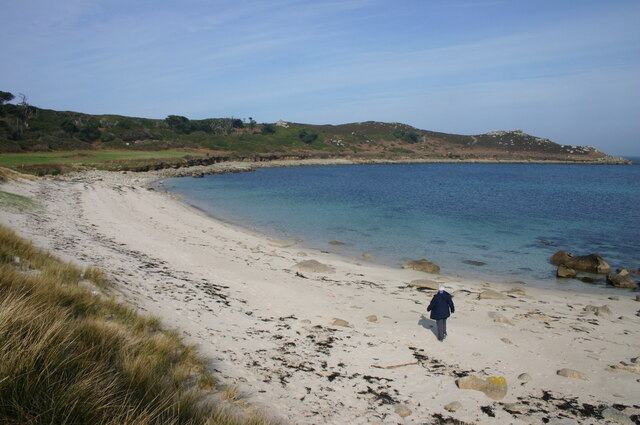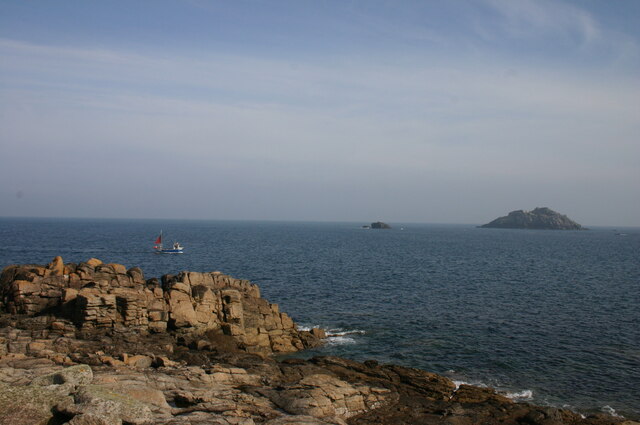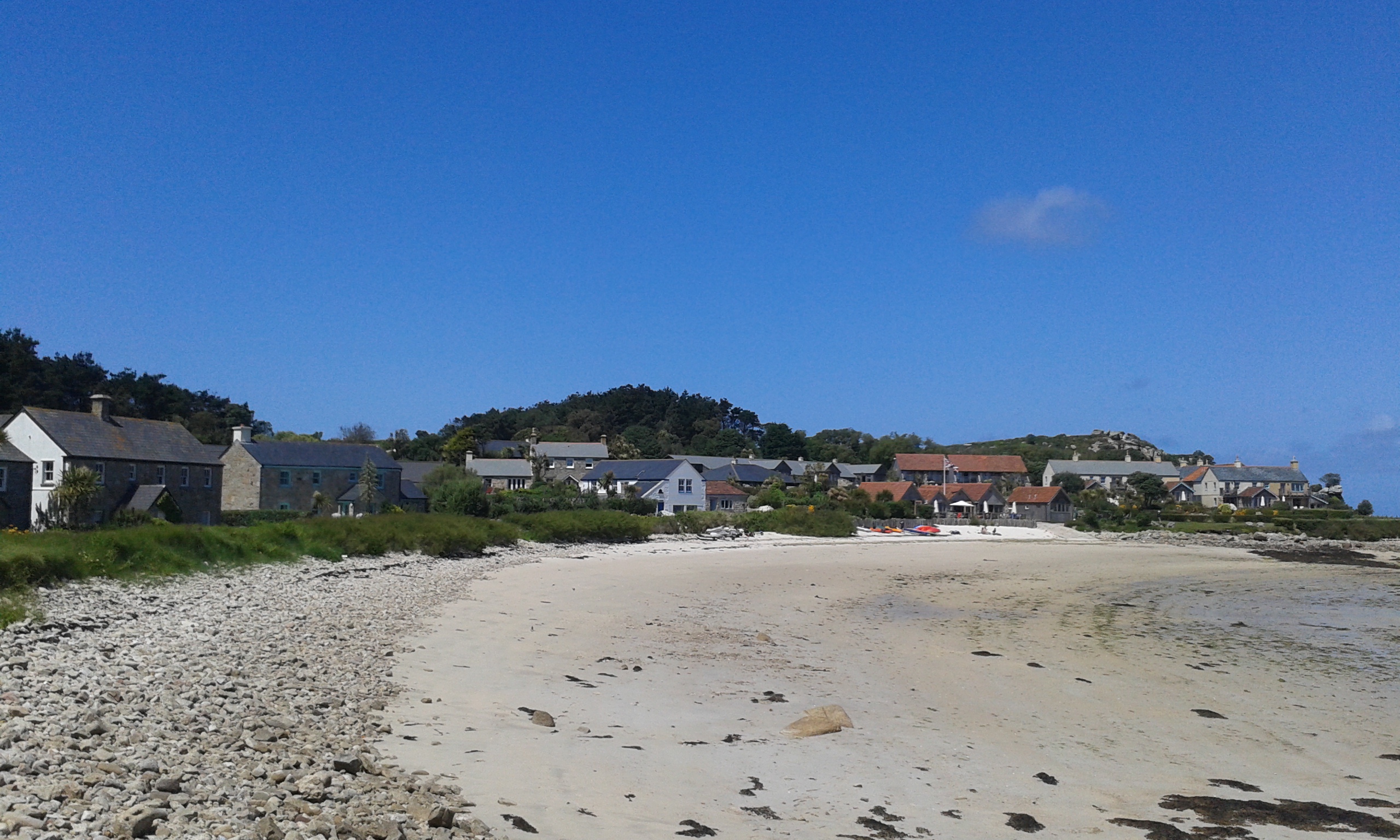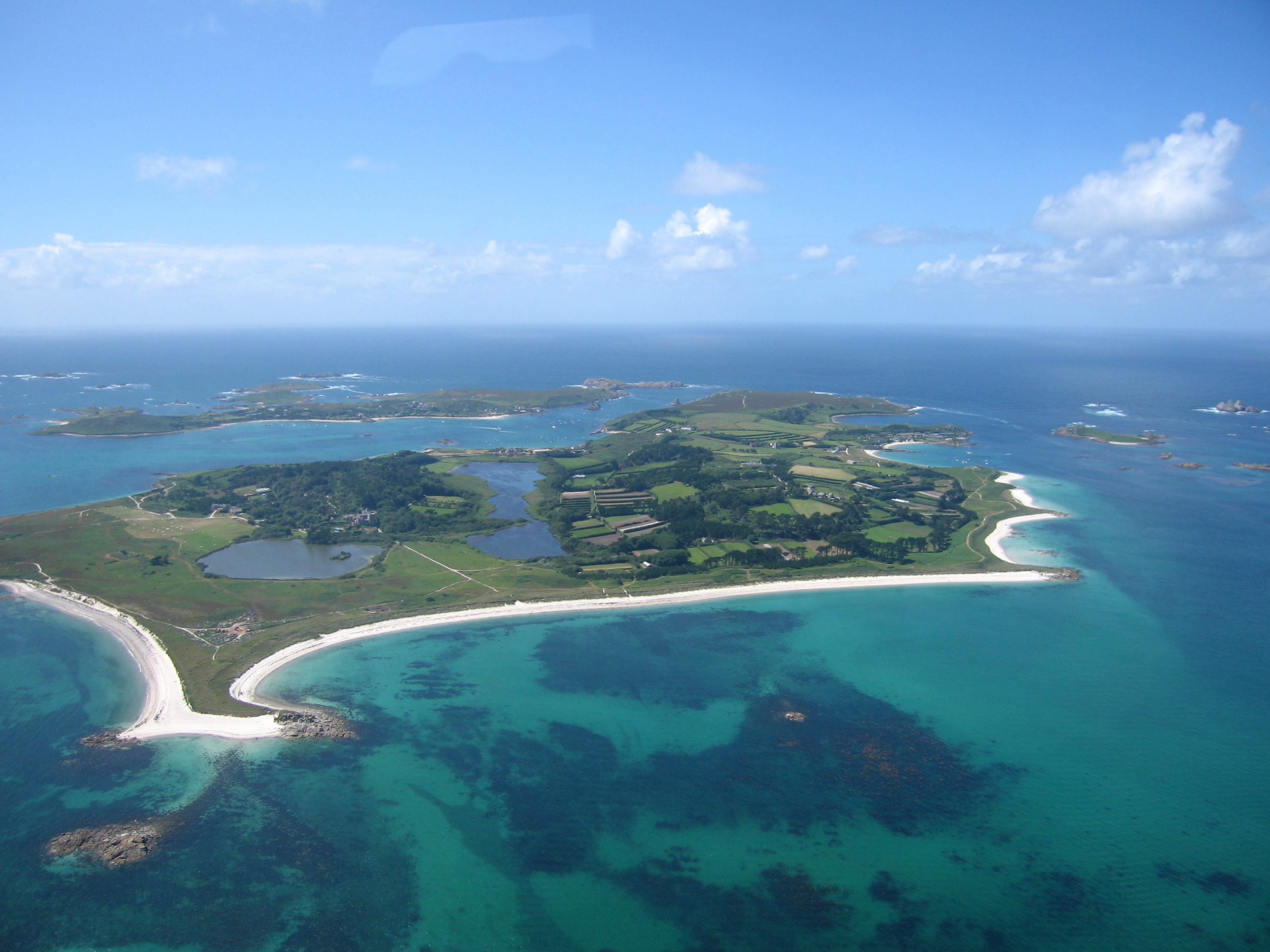Old Grimsby Harbour
Bay in Cornwall
England
Old Grimsby Harbour

Old Grimsby Harbour is a picturesque bay located on the northeastern coast of the Isles of Scilly, Cornwall, England. This natural harbor is situated between Tresco Island and St. Martin's Island, offering a serene and idyllic setting for visitors.
The bay itself is sheltered and protected by a series of rocky outcrops, forming a natural barrier against the Atlantic Ocean. This protection has made Old Grimsby Harbour a safe haven for boats and ships throughout history, serving as an important trading and fishing port.
The surrounding landscape is characterized by stunning cliffs, sandy beaches, and crystal-clear turquoise waters. The bay is also home to diverse marine life, making it a popular spot for snorkeling and diving enthusiasts. Visitors can explore the vibrant underwater world, encountering colorful fish, seahorses, and various species of seaweed.
Old Grimsby Harbour is not only renowned for its natural beauty but also for the historic ruins and landmarks that dot its shores. The remains of a 17th-century castle, Cromwell's Castle, can be found on the nearby headland, offering a glimpse into the area's rich history.
In addition to its natural and historical attractions, the bay provides a range of amenities and facilities for visitors. There are charming waterfront cottages, hotels, and restaurants offering stunning views of the bay. Boat tours and water sports activities are also available for those seeking adventure.
Overall, Old Grimsby Harbour in Cornwall is a captivating destination that combines natural beauty, historical significance, and recreational opportunities, making it a must-visit location for travelers seeking a unique and unforgettable experience.
If you have any feedback on the listing, please let us know in the comments section below.
Old Grimsby Harbour Images
Images are sourced within 2km of 49.960412/-6.3302325 or Grid Reference SV8915. Thanks to Geograph Open Source API. All images are credited.













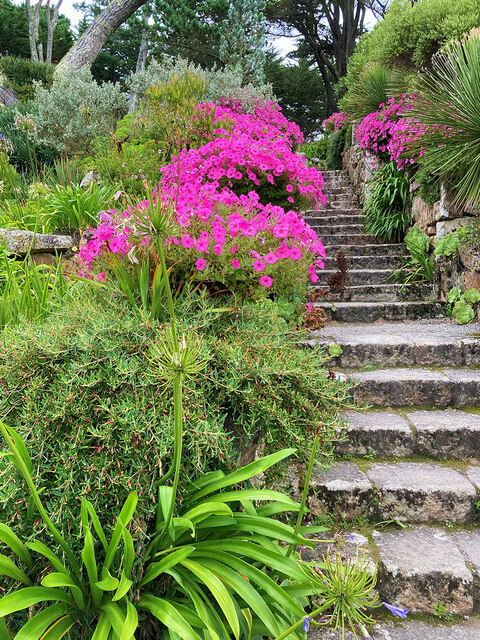
Old Grimsby Harbour is located at Grid Ref: SV8915 (Lat: 49.960412, Lng: -6.3302325)
Division: Isles of Scilly
Unitary Authority: Isles of Scilly
Police Authority: Devon and Cornwall
What 3 Words
///fizzy.smirking.wreck. Near Tresco, Isles of Scilly
Nearby Locations
Related Wikis
Old Grimsby
Old Grimsby (Cornish: Enysgrymm Goth) is a coastal settlement on the island of Tresco in the Isles of Scilly, England. It is located on the east side of...
Old Blockhouse
The Old Blockhouse, also known as the Dover Fort, is a 16th-century fortification on the island of Tresco in the Isles of Scilly. It was built between...
St Nicholas's Church, Tresco
St Nicholas's Church, Tresco, is a parish church in the Church of England located in Tresco, Isles of Scilly, UK. == History == Originally two old cottages...
Tresco, Isles of Scilly
Tresco (Cornish: Enys Skaw, lit. 'island of elder-trees') is the second-biggest island of the Isles of Scilly. It is 297 ha (1.15 sq mi) in area, measuring...
New Grimsby
New Grimsby (Cornish: Enysgrymm Nowyth) is a coastal settlement on the island of Tresco in the Isles of Scilly, England. It is located on the west side...
RNAS Tresco
RNAS Tresco was a Royal Naval Air Service base on Tresco, the second largest island in the Isles of Scilly. From February 1917 to May 1919 aircraft patrolled...
Castle Down
Castle Down is a windswept plateau of maritime heath in the northern part of the island of Tresco, Isles of Scilly. The area has a number of designations...
Piper's Hole
Piper's Hole is a sea cave located on Tresco, an island of the Isles of Scilly. The name Piper's Hole can also refer to another, more minor, sea cave in...
Nearby Amenities
Located within 500m of 49.960412,-6.3302325Have you been to Old Grimsby Harbour?
Leave your review of Old Grimsby Harbour below (or comments, questions and feedback).
